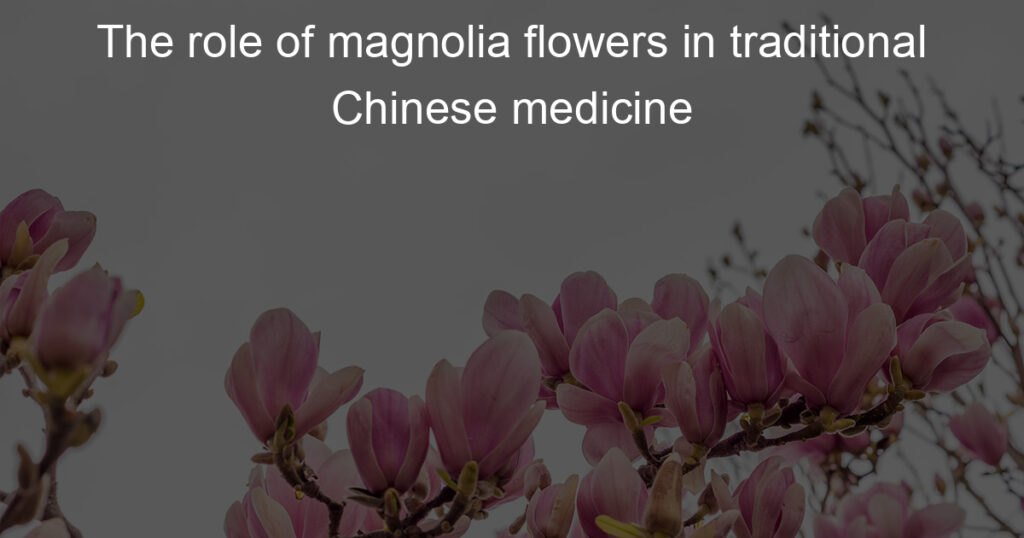The role of magnolia flowers in traditional Chinese medicine
Traditional Chinese medicine has been around for centuries, and during that time, magnolia flowers played a role in its practices. The stunning white blooms are often used in teas and tinctures and are said to have a variety of benefits. In this blog post, we’ll explore the history of magnolia flowers in traditional Chinese medicine, as well as some of the ways they’re used today.
Whether you’re interested in learning more about this ancient practice or simply want to incorporate magnolia flowers into your wellness routine, read on for everything you need to know!
What is magnolia in Chinese medicine?
In Chinese medicine, magnolia is a medicinal herb used to treat many illnesses including respiratory infections and severe stomach pain. Traditionally, it has been used as an anti-inflammatory, helping to reduce edema in medical conditions like gastrointestinal disorders.
Studies also show that it can help reduce cholesterol and blood sugar levels, making it very useful in treating heart disease and diabetes. In addition magnolia’s ability to promote blood circulation and relieve tension has been of great benefit in treating anxiety, stress, and insomnia.
Magnolia bark has even been used to treat cancer patients undergoing chemo or radiation therapy due to its anti-tumor properties. Its wide range of uses makes magnolia an essential part of Chinese medicine.
What is so special about magnolia?
Magnolia flowers are truly special for a variety of reasons – their beauty, scent, and history make them one of the most beloved flowers in the world. These delicate blooms boast an intoxicating aroma that can fill a room when clipped off the tree and placed in a vase. Indeed, its fragrance has become so iconic that many perfumes and body products have even taken the scent to capture its essence.
Popular since antiquity, magnolias were once considered symbols of femininity, love, and purity; they are conspicuously featured in classical artwork pieces from long ago. They are not just lovely to behold though – certain species of magnolia trees offer edible fruit that can be used to make tea or preserve.
The next time you spot a magnolia blossom, take a few moments to appreciate its unparalleled beauty.
Magnolia flower benefits for skin
The beautiful Magnolia flower has numerous benefits for the skin. This flower contains anti-inflammatory and antioxidant molecules, which work to protect the skin from environmental irritants. Moreover, when applied topically the magnolia flower can help remove impurities from the skin, leaving it feeling softer and smoother.
Additionally, its natural oils can replenish lost moisture, helping keep skin hydrated and nourished. In Chinese medicine culture, a paste made from freshly picked magnolias is believed to reduce age spots and wrinkles. Indeed, this elegant flower packs quite a powerful punch when it comes to skin health!
Do magnolia leaves have medicinal properties?
For centuries, magnolia leaves have been used as a natural remedy to reduce stress and tension in the body. The leaves contain compounds that act as an antispasmodic to help relax muscles, which is why they are known to be popular in Chinese remedies.
Remedies that make use of magnolia leaves are usually used for colds or coughs, but recent research has also shown that they can be beneficial for reducing inflammation and fighting fatigue. This suggests that magnolia leaves possess many properties that could potentially be medicinal.
Further research is needed to definitively establish the therapeutic potential of these remarkable leaves, however, many people have already experienced their beneficial effects firsthand.
What are the medicinal benefits of magnolia bark?
Magnolia bark has long been used in Traditional Chinese Medicine to support the digestive system, reduce inflammation and soothe the mind. Recently, science has discovered more potential health benefits of magnolia bark, such as helping improve diabetes symptoms and cardiovascular health.
It is also often used to treat headaches and insomnia due to its calming properties. This natural remedy can be taken in capsule form or brewed as a tea for its medicinal benefits, making it an easy and effective way to potentially increase overall well-being.
Concluding Thoughts: The role of magnolia flowers in traditional Chinese medicine
Overall, it can be concluded that the magnolia flower is an important floral component in Chinese traditional medicine. The potential health benefits of the flower have been well-documented and, when used properly, can produce positive outcomes for both physical and mental well-being.
Magnolia has a diverse range of uses that apply to different conditions such as colds, women’s ailments, depression, stress relief, and more. Most importantly though, magnolia is generally safe with few side effects that can be experienced without medical advice. This makes it an ideal remedy for those looking for alternative medicine options.
Beyond its medicinal value though, magnolia also carries a deep cultural significance in Chinese culture which further adds to its importance. All in all, magnolia is a miraculous plant with multiple medicinal properties and a wide variety of applications making it an indispensable part of Chinese tradition from centuries past until today.














